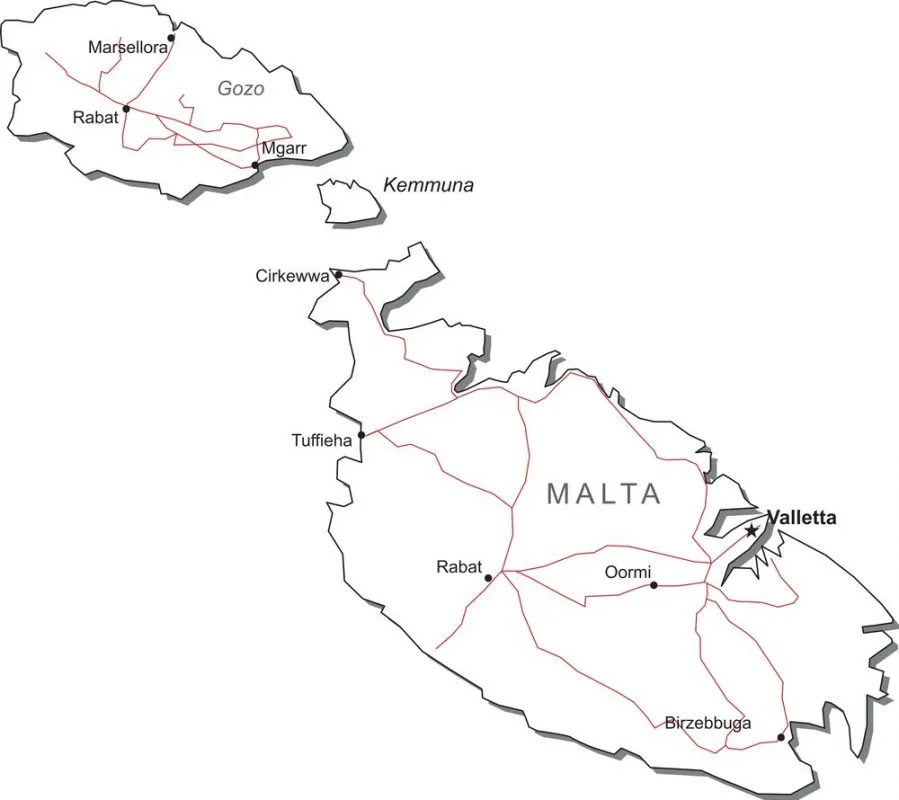
Malta
Malta is a small Island in the mediterranea but its history is a long and colourful one dating back to the dawn of civilisation.
The Maltese Archipelago went through a golden Neolithic period, the remains of which include the mysterious temples dedicated to the goddess of fertility. Later on, the Phoenicians, the Carthaginians, the Romans and the Byzantines, all left their traces on the Islands.
In 60 A.D. St. Paul was shipwrecked on the island while on his way to Rome and brought Christianity.
The Arabs conquered the islands in 870 A.D. and left an important mark on the language of the Maltese. Until 1530 The Island was an extension of Sicily: The Normans, the Aragonese and other conquerors who ruled over Sicily also governed the Maltese Islands.
It was Charles V who bequeathed Malta to the Sovereign Military Order of St. John of Jerusalem who ruled over Malta from 1530 to 1798. Following the Great Siege of 1565, the Knights took Malta through a new golden age, making it a key player in the cultural scene of 17th and 18th century Europe.
In 1798, Napoleon Bonaparte took over Malta from the Knights on his way to Egypt. The French presence on the islands was short lived, as the English, who were requested by the Maltese to help them against the French, blockaded the islands in 1800.
British rule in Malta lasted until 1964 when it became independent. The Maltese adopted the British system of public administration, education and legislation.
It became a Republic in 1974. The foreign military bases on the island closed down permanently in 1979. Malta joined the European Union in May 2004 and the Eurozone in January of 2008.
Visualizzazione di tutti i 9 risultati
The best of Malta: Valletta, fishing Village and Mdina
MaltaVisit the best of Malta: Valletta City Highlights, Hagar Qim Temples, Blue Grotto (belvedere), Marsaxlokk Fishing Village and Mdina Medieval City.1 Day- Day Tour
- Private
- All Year
Start fromThe Three Cities, Temples and Blue Grotto
MaltaVisit Senglea, Cospicua and Vittoriosa (Birgu), and other Malta highlights: Hagar Qim Temples, Blue Grotto, Marsaxlokk Fishing Village, Ghar Dalam Cave.1 Day- Day Tour
- Private
- All Year
Start fromValletta and Malta Highlights
MaltaWalking tour of Valletta with St. John’s Co. Cathedral and tour of Malta Highlights: Blue Grotto, Hagar Qim Temples and Mdina Medieval City1 Day- Shoretrip
- Private
- 7 Hours
- All Year
Start from € 95Valletta, Birgu and Mdina
MaltaA shoretrip to visit the main towns of Malta: the capital Valletta, The Trhree Cities including Birgu, and the ancient Mdina.1 Day- Shoretrip
- Private
- 7 Hours
- All Year
Start from € 95Blue Grotto and Caves
MaltaMalta Grotto and Caves for people looking for seaside and a bit of adventure: Ghar Dalam Cave, Blue Grotto (optional boat trip), Ghar Lapsi Cave (swim stop).1 Day- Shoretrip
- Private
- 4 Hours
- All Year
Start from € 65Malta Highlights
MaltaHave a glance at Malta Highlights: Blue Grotto, Hagar Qim Temples and Mdina Medieval City. Half day Shoretrip: approx. 4 hours1 Day- Shoretrip
- Private
- 4 Hours
- All Year
Start from € 65The Three Cities and Mdina
MaltaThe Three Cities and Mdina: Senglea (Gardjola Gardens), Cospicua, Vittoriosa/Birgu (historical centre/Collacchio), Mdina Medieval City.1 Day- Shoretrip
- Private
- 4 Hours
- All Year
Start from € 55Glimpse of Malta
MaltaGlimpse of Malta: Marsaxlokk Fishing Village, Blue Grotto (optional boat trip), Scenic Route via Girgenti Valley & Dingli Cliffs, Rabat.1 Day- Shoretrip
- Private
- 4 Hours
- All Year
Start from € 55Gozo Island
MaltaVisit Gozo Island and the main highlights: Ggantija Temples, Calypso's Cave, Dwejra Bay, Victoria and The Citadel. Sample local delicacies.1 Day- Day Tour
- Private
- All Year
Start from
